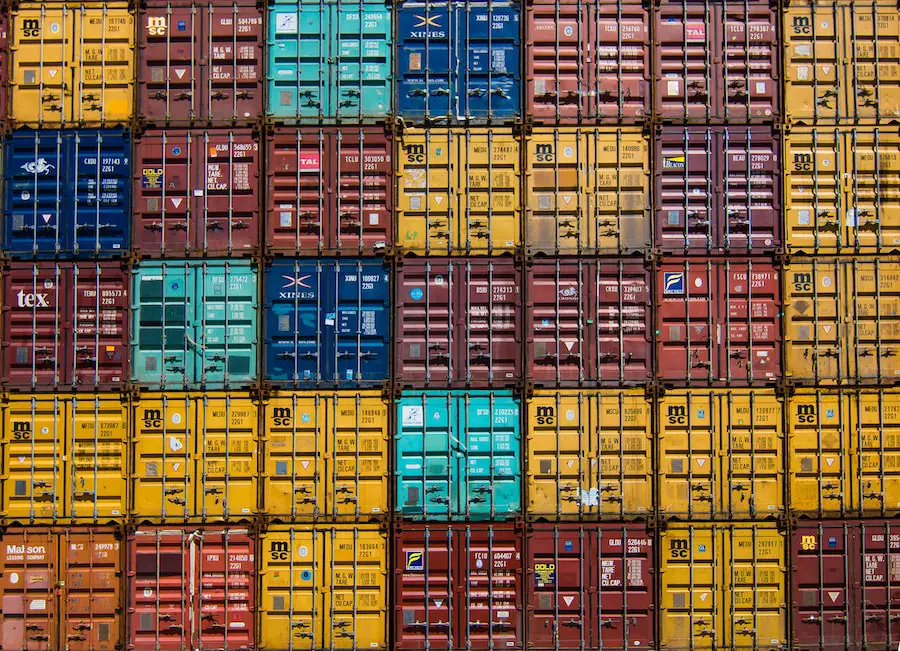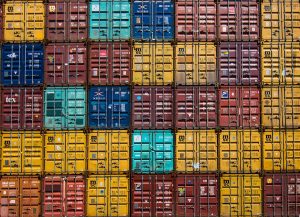Shipping alliances have become increasingly prevalent in the shipping industry in recent years.
Container alliances are formed when shipping companies join forces to share resources, collaborate on operations, and optimize their services. By pooling their resources and expertise, these alliances aim to achieve cost savings, increase efficiency, and improve service quality.
This article will explore the benefits of container alliances for shipping companies, how they are changing the competitive landscape, the role of technology in these alliances, the challenges and risks associated with them, and the impact they have on global trade.
It will also provide a case study of a successful container alliance and discuss future trends in this area.
The Benefits of Container Alliances for Shipping Companies
One of the key benefits of container alliances for shipping companies is cost savings. By sharing vessels, containers, and other resources, companies can reduce their operating expenses. This is particularly important in an industry where fuel costs and other operational expenses can be significant. By pooling their resources, companies can achieve economies of scale and negotiate better rates with suppliers.
Another benefit of container alliances is increased efficiency. By coordinating their schedules and routes, companies can optimize their operations and reduce empty container movements. This not only saves time and fuel but also reduces congestion at ports and improves overall supply chain efficiency.
Container alliances also provide shipping companies with access to new markets. By partnering with other companies that have a strong presence in certain regions, companies can expand their reach and tap into new customer bases. This allows them to diversify their revenue streams and reduce their dependence on specific markets.
Finally, container alliances can lead to improved service quality. By sharing best practices and collaborating on operational processes, companies can enhance their service offerings. This includes providing more reliable schedules, faster transit times, and better customer service. By working together, companies can leverage their collective expertise to deliver a superior customer experience.
Summarizing, these are the main benefits of container alliances:
- Cost savings
- Increased efficiency
- Access to new markets
- Improved service quality
How Container Alliances are Changing the Competitive Landscape

Container alliances have had a significant impact on the competitive landscape of the shipping industry. One of the main effects of these alliances is a reduction in competition. By joining forces, companies can eliminate duplicate services and reduce overcapacity. This helps to stabilize freight rates and prevent price wars, which can be detrimental to the industry as a whole.
Furthermore, container alliances give participating companies increased market power. By consolidating their operations, companies can control a larger share of the market and exert more influence over pricing and service levels. This allows them to negotiate better terms with customers and suppliers, giving them a competitive advantage.
Container alliances also improve the bargaining power of shipping companies with ports and suppliers. By pooling their volumes, companies can negotiate better rates with ports and secure preferential treatment. This includes priority berthing, reduced port fees, and improved access to port infrastructure. Similarly, by consolidating their purchasing power, companies can negotiate better rates with suppliers and secure more favorable terms.
The Role of Technology in Container Alliances
Technology plays a crucial role in container alliances, enabling effective communication and coordination among alliance members. Digital platforms are used to share information, collaborate on operational processes, and track shipments in real-time. This improves visibility and transparency throughout the supply chain, allowing companies to make more informed decisions and respond quickly to changes in demand or disruptions.
Blockchain technology is also being adopted by container alliances for supply chain management. By using blockchain, companies can create a secure and transparent record of all transactions and movements within the supply chain.
This helps to prevent fraud, reduce paperwork, and streamline processes. It also enables better traceability and accountability, which is particularly important in industries where compliance and regulatory requirements are stringent.
In addition to digital platforms and blockchain, container alliances are also embracing automation and artificial intelligence (AI) for operational efficiency. Automated systems can optimize vessel routing, container loading, and other processes, reducing human error and improving productivity. AI algorithms can analyze large volumes of data to identify patterns and trends, enabling companies to make more accurate forecasts and optimize their operations.
Challenges and Risks Associated with Container Alliances
While container alliances offer many benefits, they also come with their fair share of challenges and risks. One of the main challenges is navigating the complex regulatory landscape.
Shipping is a highly regulated industry, with different countries having their own rules and regulations. Coordinating operations across multiple jurisdictions can be challenging and requires careful compliance management.
Cultural differences among alliance members can also pose challenges. Shipping companies from different countries may have different business practices, communication styles, and decision-making processes. It is important for alliance members to establish clear communication channels and foster a culture of collaboration and trust.
Another potential risk of container alliances is the potential for conflicts of interest. Alliance members may have different priorities and objectives, which can lead to disagreements and conflicts. It is important for alliance members to establish clear governance structures and mechanisms for resolving disputes.
Case Study: The Success of the 2M Alliance
One example of a successful container alliance is the 2M Alliance, which was formed in 2014 between Maersk Line and Mediterranean Shipping Company (MSC). The 2M Alliance is one of the largest container alliances in the world, with a combined fleet capacity of over 4 million TEUs (twenty-foot equivalent units).
The success of the 2M Alliance can be attributed to several key factors. One factor is the complementary nature of the two companies’ networks. Maersk Line has a strong presence in Asia-Europe trade, while MSC has a strong presence in transatlantic and Latin American trade. By combining their networks, the 2M Alliance is able to offer customers a comprehensive global coverage.
Another factor contributing to the success of the 2M Alliance is the focus on operational efficiency. The alliance has implemented a number of initiatives to optimize vessel utilization, reduce empty container movements, and improve service reliability. This includes joint vessel sharing agreements, slot exchanges, and coordinated schedules.
The 2M Alliance has also embraced technology to enhance its operations. The alliance uses a digital platform for communication and coordination, allowing alliance members to share information and collaborate on operational processes. This improves visibility and transparency throughout the supply chain, enabling better decision-making and faster response times.
The Impact of Container Alliances on Global Trade
Container alliances have had a significant impact on global trade patterns. By consolidating their operations, shipping companies can offer more frequent and reliable services, which has led to changes in trade flows. For example, the formation of container alliances has resulted in the emergence of new trade routes and the expansion of existing ones.
Container alliances have also increased competition among ports. As shipping companies consolidate their operations, they are able to negotiate better terms with ports, leading to increased competition among port operators. This has prompted ports to invest in infrastructure and improve their services in order to attract alliance members.
While container alliances have brought many benefits, they have also raised concerns about the implications for small and medium-sized enterprises (SMEs). Some argue that container alliances give larger shipping companies an unfair advantage, as they can negotiate better rates with ports and suppliers. This can make it more difficult for SMEs to compete in the market and may lead to consolidation within the industry.
Future Trends in Container Alliances
Looking ahead, there are several future trends that are likely to shape the container alliance landscape. One trend is the expansion of existing alliances. As shipping companies seek to achieve further cost savings and operational efficiencies, they may choose to expand their alliances by adding new members or increasing their cooperation with existing members.
Another trend is the emergence of new alliances. As the industry continues to evolve, new alliances may form to address specific market needs or capitalize on emerging opportunities. These alliances may be formed by shipping companies, logistics providers, or other industry stakeholders.
Sustainability and environmental concerns are also expected to play a greater role in container alliances in the future. As the shipping industry faces increasing pressure to reduce its carbon footprint, container alliances may integrate sustainability practices into their operations. This could include the use of alternative fuels, the adoption of green technologies, and the implementation of carbon offset programs.
The Importance of Collaboration in the Shipping Industry
Container alliances highlight the importance of collaboration in the shipping industry. In an industry that is highly interconnected and relies on efficient coordination among various stakeholders, collaboration is essential for success. By working together, shipping companies, ports, suppliers, and other industry players can achieve greater efficiency, reduce costs, and improve service quality.
Collaboration brings many benefits for the entire supply chain. By sharing information and coordinating their operations, stakeholders can reduce inefficiencies and eliminate bottlenecks. This leads to faster transit times, lower costs, and improved customer satisfaction. Collaboration also enables stakeholders to pool their resources and expertise, leading to innovation and continuous improvement.
Container alliances play a crucial role in promoting collaboration in the shipping industry. By bringing together multiple companies with different strengths and capabilities, alliances create a platform for cooperation and knowledge sharing. This allows companies to leverage their collective resources and expertise to achieve common goals.
Conclusion: The Growing Significance of Container Alliances in the 21st Century
In conclusion, container alliances have become increasingly important in the shipping industry. These alliances offer many benefits for shipping companies, including cost savings, increased efficiency, access to new markets, and improved service quality. They are changing the competitive landscape by reducing competition, increasing market power, and improving bargaining power with ports and suppliers.
Technology plays a crucial role in container alliances, enabling effective communication and coordination among alliance members. Digital platforms, blockchain technology, and automation are being used to enhance operational efficiency and improve supply chain management.
While container alliances offer many benefits, they also come with challenges and risks. Navigating the complex regulatory landscape, managing cultural differences, and addressing conflicts of interest are some of the challenges that need to be overcome.
The success of the 2M Alliance demonstrates the potential of container alliances to drive growth and innovation in the shipping industry. The impact of container alliances on global trade patterns and the implications for small and medium-sized enterprises are also significant.
Looking ahead, the expansion of existing alliances, the emergence of new alliances, and the integration of sustainability and environmental concerns are expected to shape the future of container alliances. Collaboration will continue to be crucial in the shipping industry, and container alliances will play a key role in promoting cooperation and innovation. It is important for industry stakeholders to embrace collaboration and innovation in order to thrive in the 21st century.


